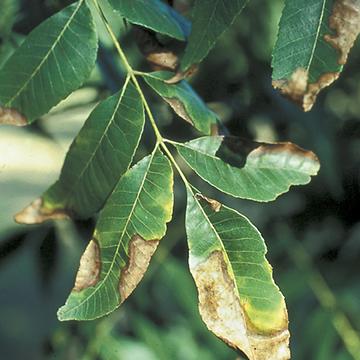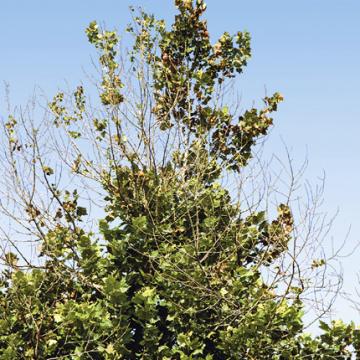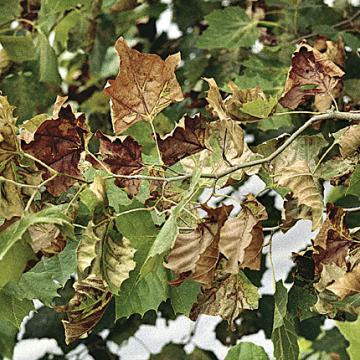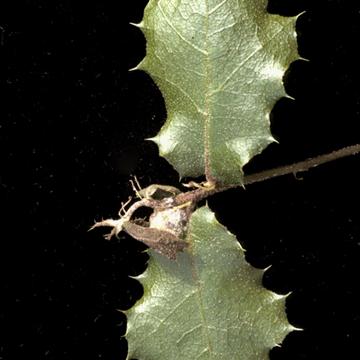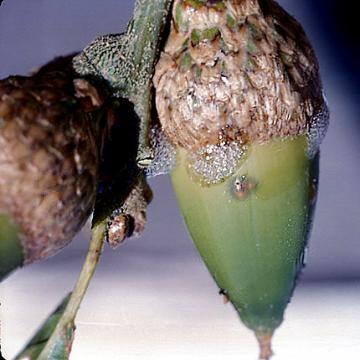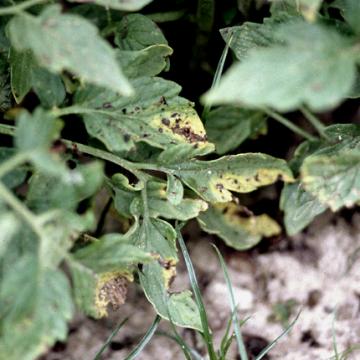DISEASE: Bacterial leaf scorch
HOST: Pecan
Pecan with necrotic scorched leaves with distinct dark lines between healthy and diseased tissues.
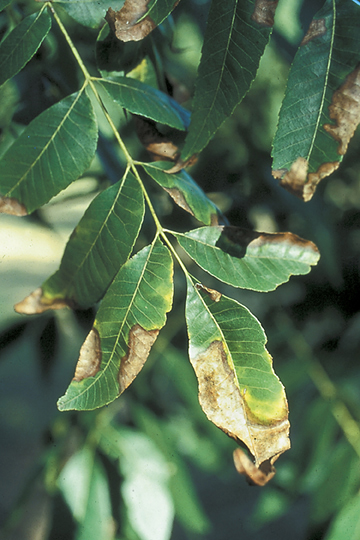
Bacterial leaf scorch | Pecan
DISEASE: Bacterial leaf scorch
HOST: Pecan (Carya illinoinensis)
PATHOGEN: Xylella fastidiosa
SOURCE: T. Brenneman
DISEASE: Bacterial leaf scorch
HOST: Sycamore
Sycamore with scorched leaves and dieback of small branches.
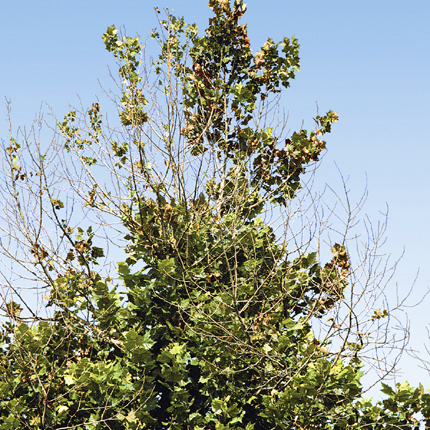
Bacterial leaf scorch | Sycamore
DISEASE: Bacterial leaf scorch
HOST: Sycamore (Platanus occidentalis)
PATHOGEN: Xylella fastidiosa
SOURCE: W. Sinclair
DISEASE: Bacterial leaf scorch
HOST: Sycamore
Close-up of scorched leaves.
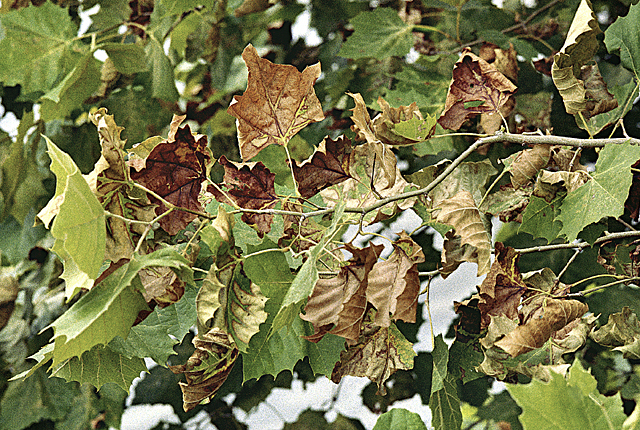
Bacterial leaf scorch | Sycamore
DISEASE: Bacterial leaf scorch
HOST: Sycamore (Platanus occidentalis)
PATHOGEN: Xylella fastidiosa
SOURCE: W. Sinclair
DISEASE: Drippy nut disease
HOST: Oak
Ooze from young twig inoculated with Brenneria quercina.
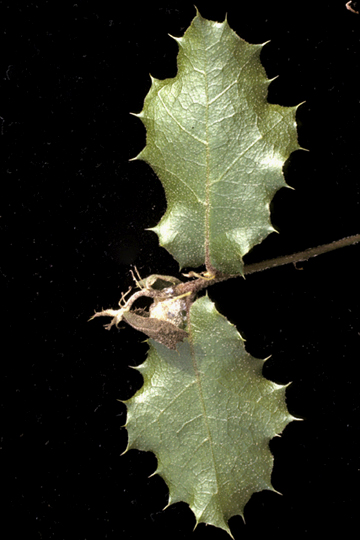
Drippy nut disease | Oak
DISEASE: Drippy nut disease
HOST: Oak (Quercus agrifolia)
PATHOGEN: Brenneria quercina
PATHOGEN SYNONYM: Erwinia quercina
SOURCE: M. Schroth
DISEASE: Drippy nut disease
HOST: Oak
Ooze from infected acorn. Copious ooze drips from infected acorns, leaving sticky spots on objects under tree canopy. Infections are associated with insect oviposit wounds.
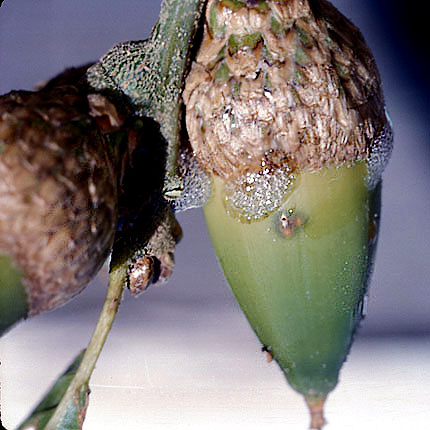
Drippy nut disease | Oak
DISEASE: Drippy nut disease
HOST: Oak (Quercus agrifolia)
PATHOGEN: Brenneria quercina
PATHOGEN SYNONYM: Erwinia quercina
SOURCE: M. Schroth
DISEASE: Syringae leaf spot
HOST: Tomato
Leaves with brown necrotic lesions and chlorotic margins. Symptoms vary greatly among cultivars. Some have black or brown lesions with bright yellow, chlorotic areas and others do not have yellowing.
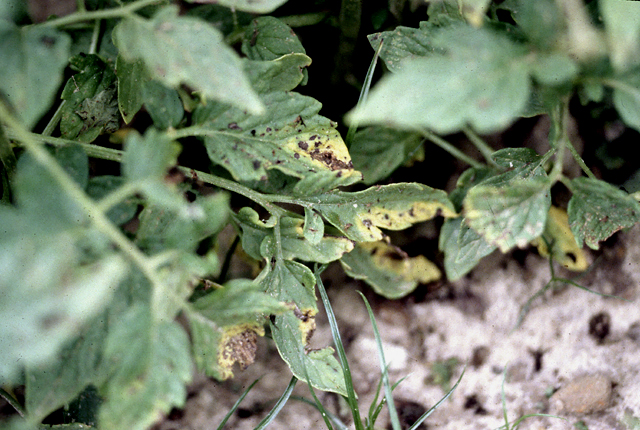
Syringae leaf spot | Tomato
DISEASE: Syringae leaf spot
HOST: Tomato (Lycopersicon esculentum)
PATHOGEN: Pseudomonas syringae pv. syringae
SOURCE: R. Gitaitis


